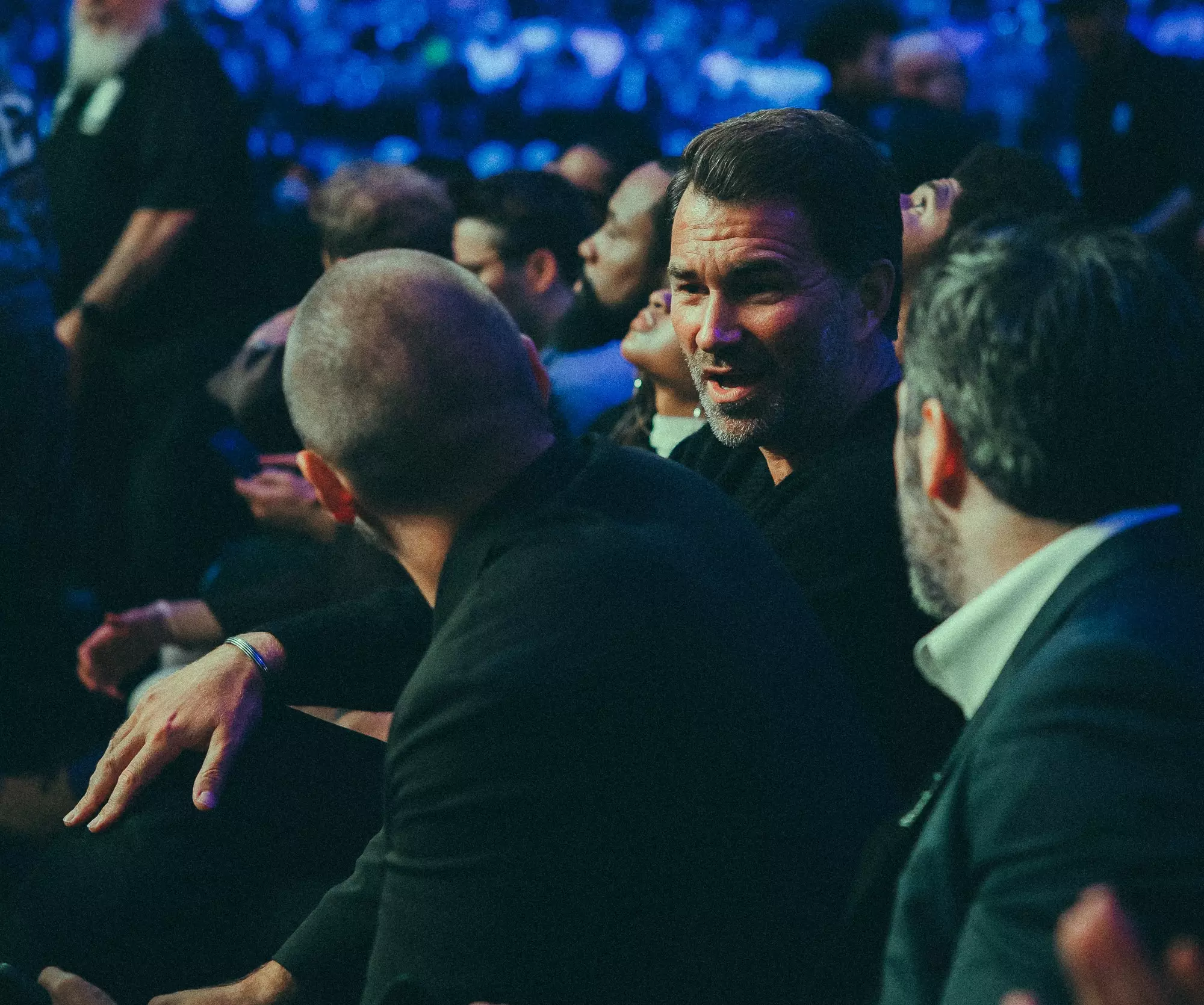The landscape of boxing has undergone significant transformation in recent years, blurring the lines between traditional sportsmanship and entertainment-driven spectacle. A striking example of this evolution is the recent matchup between Mike Tyson, a former heavyweight champion, and Jake Paul, a well-known YouTuber. The fight, streamed on Netflix, not only resulted in a one-sided victory for Paul but also raised serious questions regarding the integrity and future direction of the sport.
Eddie Hearn, a prominent boxing promoter, openly expressed his discomfort regarding the event. At 58 years old, Tyson is a shadow of his former self, and Hearn’s skepticism underscores the ethical concerns surrounding the revival of fighters past their prime for the sake of profit. The notion that a young influencer could draw a legendary boxer out of retirement for a cash grab speaks volumes about the current priorities in boxing.
Hearn pointed out the mismatch in experience and ability that characterized the bout. Jake Paul himself acknowledged that he refrained from delivering a full-throttle performance to avoid potentially harming Tyson. This raises an important question: how far is too far when it comes to using legacy athletes for modern entertainment? There is a fine line between honoring a sport’s legacy and exploiting it for financial gain. When younger fighters or entertainers challenge older icons, the potential for injury looms large, leading to serious concerns over the welfare of these aged competitors.
In contrast, Hearn suggested that a fight between Jake Paul and a recently active middleweight like Gennadiy Golovkin might present a more balanced and engaging spectacle. Unlike Tyson, Golovkin, despite his age, remains a formidable competitor and possesses the skills that could bring a real sense of drama to the ring. Such a match would be built on competitive fairness rather than the mere allure of nostalgia.
Interestingly, the reception of the Tyson-Paul fight illustrates a divide in audience expectations. While hardcore boxing purists lamented the spectacle, a different segment of the audience tuned in for entertainment rather than sport. Hearn noted this dichotomy, acknowledging that while the views and ticket sales were impressive, the essence of boxing that many hold dear seems to be lost amid the growing commercialization of the sport.
The emergence of such events could redefine the meaning of “fight night.” For some, it is about maintaining the traditions of combat sports, steeped in respect. For others, it is about content creation and mass appeal, where numbers outweigh the spirit of competition. Hearn articulated this sentiment, stating, “There’s no right or wrong,” and acknowledging the split between those who revere boxing as sport versus those who view it as mere entertainment.
Moving forward, it is crucial for boxing fans, promoters, and athletes alike to engage in serious contemplation regarding the future of the sport. While the blending of entertainment and competition may attract new fans, one must ask whether sacrificing the sport’s integrity is worth the fleeting success of commercially driven events. As boxing continues to grapple with this reality, perhaps the most significant battles will not just unfold in the ring but within the hearts and minds of those who cherish the sport’s rich heritage. Ultimately, staying true to the noble art of boxing may serve the community better than chasing after immediate financial gain.

